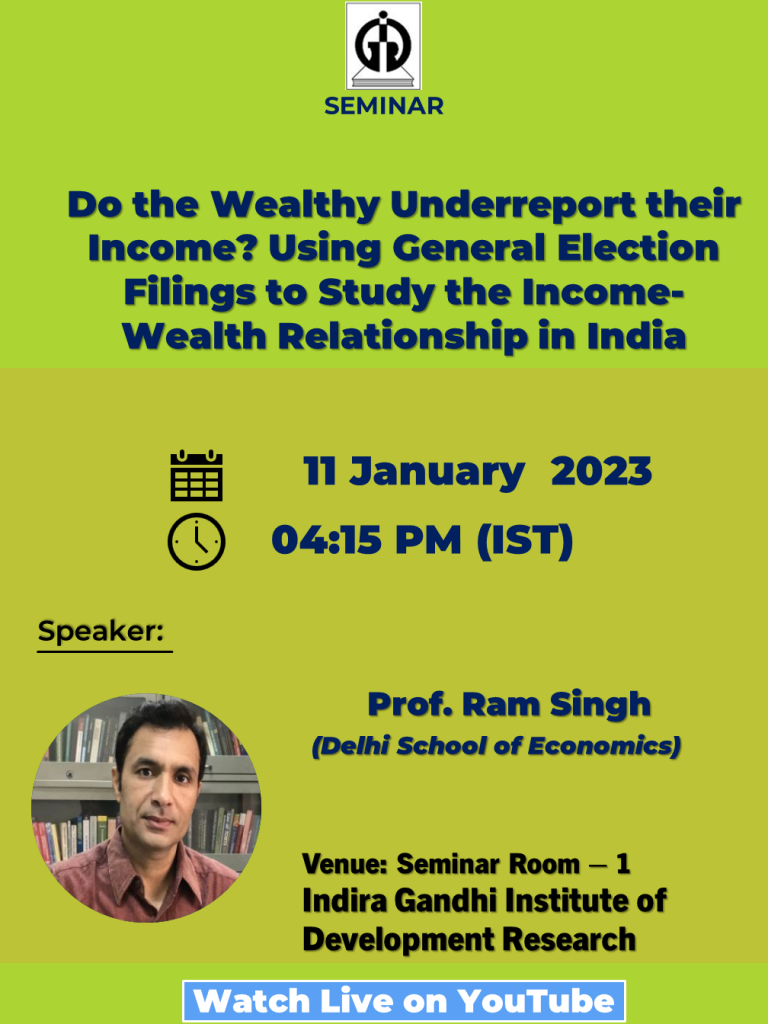Abstract:-
We model and estimate the relationship between wealth and reported income for individuals and families across different wealth groups in India. We use a new dataset based on affidavits filed by election contestants, the Forbes List of billionaires, and the statistics published by the Indian Tax Department. We show that the wealthier the individual or the family, the lesser the reported income relative to wealth. On average, a 1% increase in family wealth is associated with a decrease of more than 0.5% in the reported income as a ratio of wealth. The total income reported by the bottom 10% of families in the data amounts to more than 188% of their wealth; in contrast, the wealthiest 5% [respectively 0.1%] of families reported incomes that were just 4% [respectively 2%] of their wealth. The total income reported by the wealthiest Forbes list families is less than 0.6% of their wealth. From another perspective, the total income reported by the wealthiest 0.1% of families is only about a fifth of the returns from their capital, and at least 80% of their capital income goes unreported in the income tax returns. For the Forbes-listed 100 families, more than 90% of the capital returns do not figure in their reported incomes! The income-wealth ratios for affluent individuals exhibit very similar patterns. We discuss the processes responsible for the “missing” income of the wealthy groups and show that this “missing” income leads to an underestimation of income inequality. Furthermore, it reduces the tax liability of the wealthiest percentile group to a mere 1% of their wealth. The tax liability of the wealthiest 0.1 centiles and the Forbes-listed families is less than one-tenth of their capital income. Tax paid by these groups relative to their wealth is smaller than the relative tax liability for middle-wealth groups.


